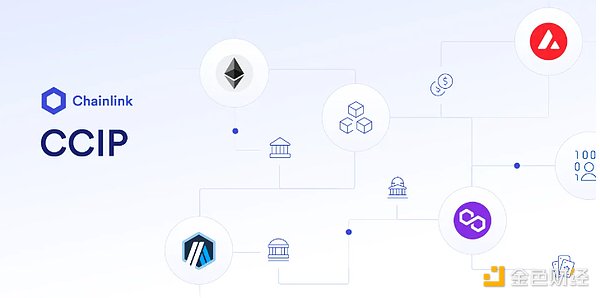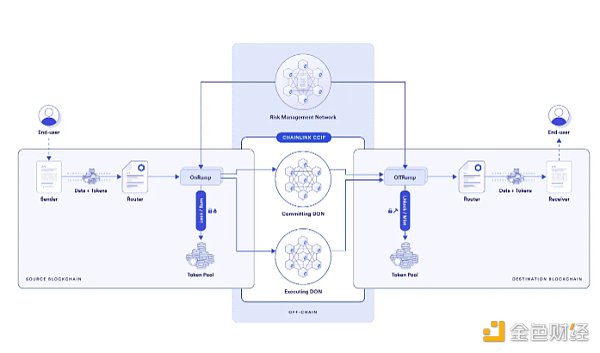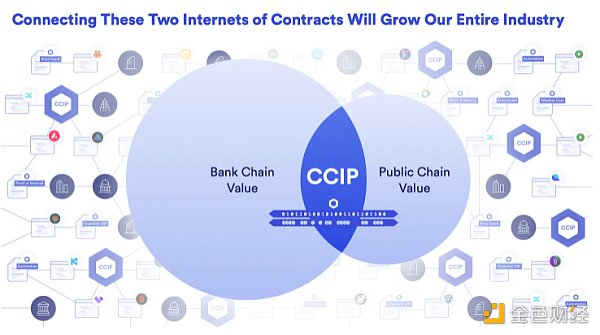Author: LianGuaiul Veradittakit, Partner at LianGuaintera Capital; Translation: LianGuai0xJS
Introduction
We live in a multi-chain world; from L2 to application chains to non-EVM ecosystems, it is clear that there is no one-size-fits-all public chain for all use cases. However, due to the diversity in codebases, frameworks, and design choices among various ecosystems, achieving interoperability has always been a difficult problem to solve. Without a unified interoperability protocol, many blockchains and applications need to build internal cross-chain interaction implementations, which are expensive, error-prone, and highly non-scalable.
Chainlink’s Cross-Chain Interoperability Protocol (CCIP) is a bold attempt to solve this interoperability problem, which was announced to go live on the mainnet at EthCC in July 2023. By leveraging its unique position as the market-leading Web3 service platform in the blockchain ecosystem, Chainlink aims to build an “industry-standard” protocol for interoperability between diverse ecosystems. In this article, we will explore the conceptual design and architecture of CCIP, including the novel risk management network and the use cases unlocked by this groundbreaking new idea.

- AMA with Matter Labs Co-founder The Final Battle of zkSync
- Why has Fidelity Mafia become a talent incubator for crypto giants?
- Revolut A fully decentralized over-the-counter trading application.
Conceptual Design
Historically, most cross-chain interactions have been done through blockchain bridges, which are traditionally centralized and not scalable, introducing counterparty risk and leading to major cryptocurrency hacks measured by transaction volume. At a high level, CCIP attempts to address this “centralized bridge problem” by leveraging Chainlink’s decentralized oracle networks (DONs), which have gained industry recognition and adoption for price information feeds and other off-chain data.
CCIP primarily supports three major functionalities:
1. Arbitrary message passing between smart contracts on different blockchains – for example, triggering the “buy NFT” function on Polygon will mint the NFT on the Ethereum mainnet.
2. Token transfers, such as transferring ERC-20 tokens from a smart contract on Avalanche to a user’s wallet on Arbitrum.
3. Programmable token transfers, which is a combination of the above two – you are sending byte data parameters (e.g., transaction price) and tokens across chains.
By enabling cross-chain transfer of tokens and arbitrary byte data, one of the main problems that CCIP aims to solve is the fragmentation of liquidity between different chains and ecosystems. This is particularly important for DApps like Uniswap, which is deployed on over 10 chains. Currently, even though all chains support EVM and the same smart contracts can be deployed on multiple chains with minimal changes, the inefficiency of cross-chain frameworks creates “liquidity islands” across different chains. For example, less common token pairs on Uniswap may only have sufficient liquidity on the Ethereum mainnet, and if someone tries to trade these pairs on Arbitrum Uniswap with almost no liquidity, they would be forced to migrate to the Ethereum mainnet first and pay higher transaction fees.
Therefore, CCIP may lead a new generation of cross-chain DApps that can leverage the liquidity advantage of certain networks (such as the Ethereum mainnet) and the throughput advantage of scaling solutions like Arbitrum. This not only improves the capital efficiency of these DeFi platforms, but more importantly, provides a cheaper, simpler, and smoother experience for developers and users, allowing them to abstract the complexity of cross-chain interactions.
Components and Architecture
Overview
Although CCIP may sound relatively simple in concept, designing and ensuring system security is not straightforward, as it requires extensive on-chain and off-chain validation mechanisms. Imagining the overall architecture of CCIP as an international airport hub is a simple way to understand it, where you can board “connecting flights” to reach your destination. In this section, we will use this analogy to introduce the three most important parts of the Chainlink CCIP security architecture: Committing DON (Departure Hall), Risk Management Network (Airport Security and Air Traffic Control), and Executing DON (Flights and Arrival Customs).

Committing DON
The first part of the network is the Committing DON. This DON continuously monitors the input data in the “on-ramp” contracts (containing transaction information) on the source chain, similar to a departure hall providing services for outbound flights to different destinations. For each “outbound flight,” the Committing DON needs to ensure that the transactions on the original source chain (such as the Ethereum mainnet) have reached a final state before packaging them together for sending to the target blockchain. This DON essentially signs the bundled Merkle root hash and then writes this data to the “Commit Store” contract or the “check-in process” on the target blockchain (such as Arbitrum).
Executing DON
Executing DON is a separate decentralized oracle network that serves as “flights and arrival customs.” Once the Committing DON stores the commitment of bundled transactions on the target chain and has been “blessed” by the Risk Management Network (described below), the Executing DON creates a cryptographic proof (Merkle proof) for each transaction to be executed on the target blockchain. Before executing each transaction, the “off-ramp” contract verifies this Merkle proof based on the “blessed” Merkle root in the “check-in process.”
Risk Management Network
The core advantage of separating the “Committing” and “Executing” DONs is that we can introduce additional security in between, namely the Risk Management Network, which can halt transactions in mid-process if anomalies are detected. It’s almost like the airport security team can stop you before boarding after you have checked in.
The Risk Management Network of Chainlink CCIP consists of a set of independent nodes that monitor the Merkle root hash written by the Committing DON to the “Commit Store” contract. The Risk Management Network is even developed by different teams and in different programming languages (Rust), and it minimizes external dependencies (e.g., not using OCR-based P2P networks) to reduce the possibility of shared vulnerabilities between the Risk Management Network and the main CCIP system.
For each record written in the check-in process, the Risk Management Network independently reconstructs the Merkle root hash from the transaction information in the “on-ramp” contract. If there is a successful match, the Risk Management node will “bless” the submitted Merkle root hash. Once the submitted Merkle root hash receives enough “blessings” from different Risk Management nodes, it is ready for use by the Executing DON. On the other hand, if there is a mismatch between the submitted Merkle root hash and the information constructed by the Risk Management Network, the Risk Management node will not “bless” this message and it will not be executed. Additionally, the Risk Management node can trigger alerts and “curse” transactions. If the operating nodes of the Risk Management Network receive a certain number of “curses,” they will pause all CCIP transactions and implement a “security lock” for further investigation.
Therefore, it is through this three-layer design that Chainlink CCIP seeks to ensure the security of its cross-chain transactions and decentralize roles and responsibilities among different oracle groups. The Risk Management Network is unique to CCIP, and no other cross-chain solution offers the same level of decentralization and security, thanks to its novel architecture.
Use Cases and Adoption
As mentioned earlier, Chainlink, as a benchmark for oracle services, is in an ideal position to lead in the field of cross-chain interoperability. So far, Chainlink CCIP is in the “mainnet early access” stage, initially supporting five ecosystems: Ethereum, Optimism, Avalanche, Arbitrum, and Polygon. More chains will be supported in the near future.
Early adopters of Chainlink CCIP include leading DeFi protocols Aave and Synthetix. For example, Aave is using CCIP to achieve cross-chain governance, allowing users to vote on other chains while using Ethereum as a hub to aggregate and manage governance activities. On the other hand, Synthetix uses CCIP to facilitate cross-chain transfer of sUSD liquidity through a unique burn and mint model, where sUSD is burned on the source chain and an equal amount of sUSD is minted on the target chain.
Although many of the early use cases of Chainlink CCIP are in the DeFi space, such as cross-chain lending, gas fee reduction (by conducting transactions on cheaper networks instead of the Ethereum mainnet), and optimizing cross-chain yields, the long-term vision of CCIP goes beyond regular DeFi and includes connecting traditional financial institutions and DeFi projects by bridging the value of banking chains and public chains. For example, Swift, the main network used by financial institutions to guide international fund transfers and financial transactions, announced a collaboration with Chainlink and over a dozen financial institutions and market infrastructure providers including DTCC, Euroclear, BNY Mellon, etc., to test how enterprises can leverage their existing Swift infrastructure and CCIP to guide the tokenization of assets on a range of public and private blockchain networks.
 Additionally, the potential use cases of CCIP are not limited to banking alone. Until now, despite the use of permissioned enterprise-grade chains by many enterprises including Walmart, there has been a lack of available bridging technologies and widespread skepticism in the industry, resulting in a lack of integration and interoperability with the broader cryptocurrency ecosystem. This may give rise to a new wave of adoption by enterprises and institutions to leverage Web3 applications and use cases.
Additionally, the potential use cases of CCIP are not limited to banking alone. Until now, despite the use of permissioned enterprise-grade chains by many enterprises including Walmart, there has been a lack of available bridging technologies and widespread skepticism in the industry, resulting in a lack of integration and interoperability with the broader cryptocurrency ecosystem. This may give rise to a new wave of adoption by enterprises and institutions to leverage Web3 applications and use cases.
Conclusion
The Cross-Chain Interoperability Protocol (CCIP) of Chainlink represents a significant breakthrough in connecting decentralized liquidity and functionality across different blockchains and ecosystems. By leveraging Chainlink’s industry-leading decentralized oracle network for secure message transmission and token transfers, CCIP provides a solid foundation for building the next generation of cross-chain DApps.
The introduction of CCIP solidifies Chainlink’s position as a feature-rich Web3 service platform, providing developers with all the tools needed to build advanced smart contract applications, from secure access to external data (e.g., data feeds) and off-chain computations (e.g., automation) to secure cross-chain message transmission and token transfers. Adding CCIP to the Chainlink network makes it the only platform where developers can access all data, computations, and cross-chain connections/value transfers, which is a key feature of a winning developer platform.
Currently, major DeFi protocols such as Aave and Synthetix are using CCIP to optimize liquidity and enhance user experience. But the potential of CCIP goes far beyond DeFi – by connecting enterprises, financial institutions, and permissioned blockchains with public chains, Chainlink can greatly expand the use cases and practical applications of blockchain technology.
Like what you're reading? Subscribe to our top stories.
We will continue to update Gambling Chain; if you have any questions or suggestions, please contact us!